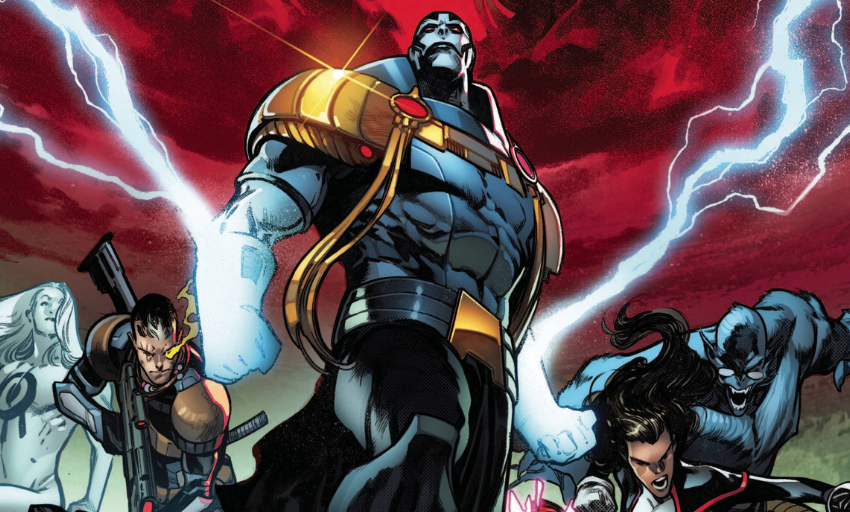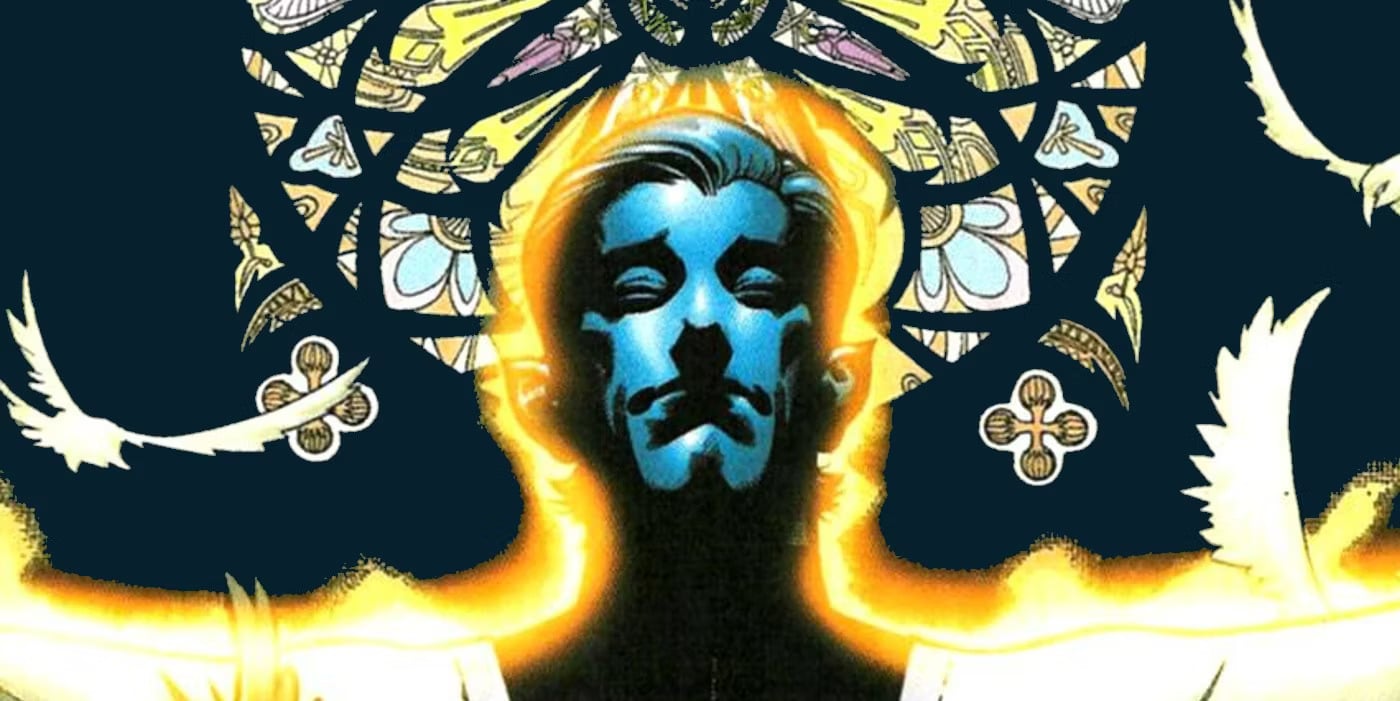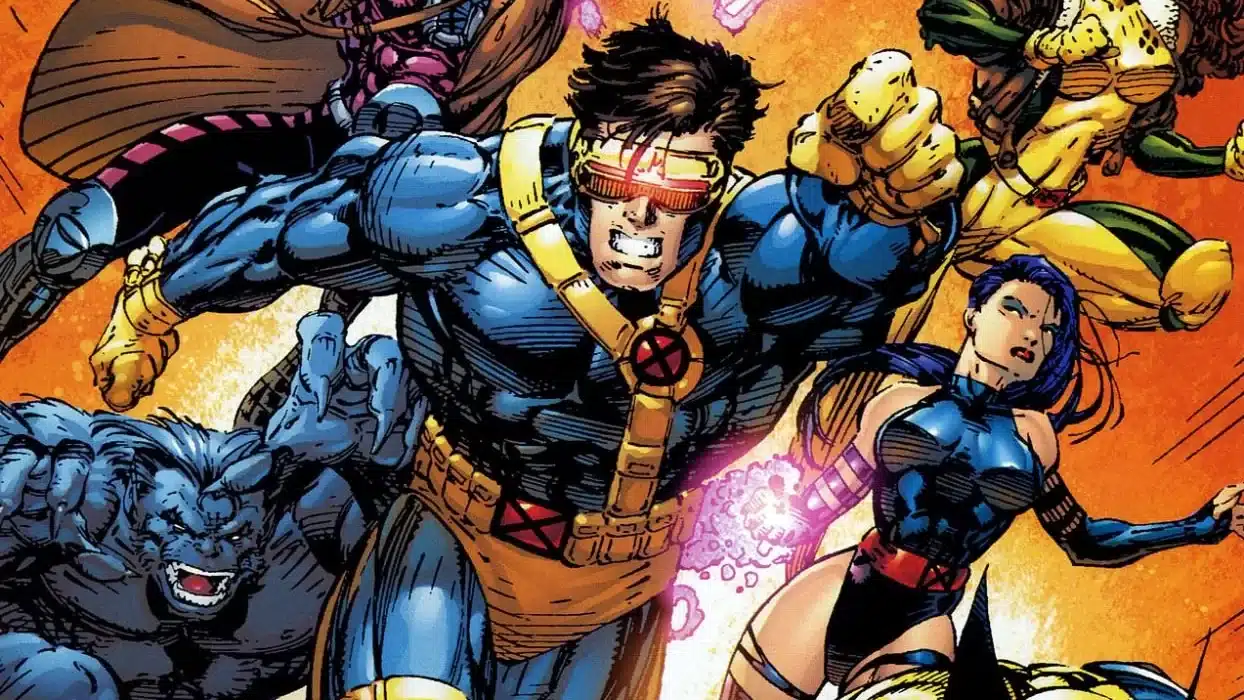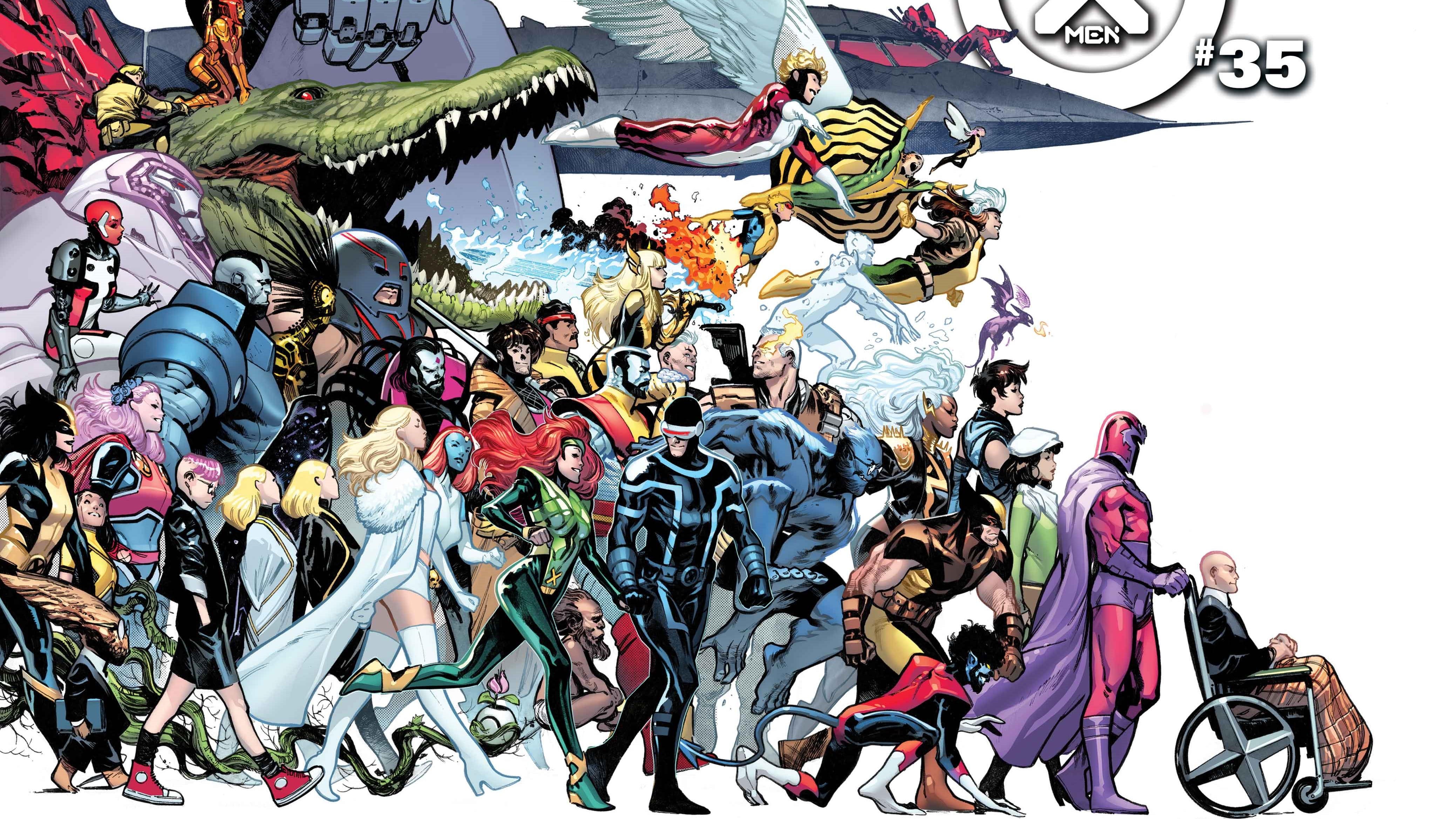We’re not too far removed from the end of X of Swords, a 22-issue X-Men mega-crossover that many have characterized as a “tournament arc.”
But, other than being a staple of manga and anime, what is a tournament arc? Is a tournament arc like hardcore pornography (you know it when you see it), or does it have strictures, rules and tropes that can be used to determine the narrative form and value of a tournament? Of course it does. In this two-part series, I will begin by examining five tournament arcs from manga across the past four decades, and determine why the tournament arc is so alluring a construct. In part two, I will break down X of Swords to answer two key questions: Is it a tournament arc, and how does it relate to the framework we are about to determine?
Enter the Contestants
To begin with, I had to narrow my definition of a tournament arc to make it approachable as a concept. I have limited myself to considering only battle manga from Weekly Shonen Jump. While it’s true that tournament arcs appear in all types of manga, from sports to gaming to cooking, they rely on a different set of assumptions and tropes such that comparing Hikaru no Go to Naruto is pointless. I’ve also chosen to limit myself to WSJ manga because it is easier to establish a clear chain of influence. Besides being the most popular comics magazine in the world, WSJ mangaka tend to read WSJ, reference other WSJ works and have to follow the same formal constraints as other WSJ works. Here are the five arcs considered (starting with the chapter in which the tournament is first mentioned, and ending with the chapter where the contestants leave the tournament):
The 21st World Tournament – Dragon Ball, Akira Toriyama, chapters 30-54, 1985.
This choice hardly needs introduction. Dragon Ball is one of the most popular manga and anime across the world, redefined the look and style of shonen battle manga, and brought the tournament arc into prominence. Toriyama may have lifted his tournament style from Enter the Dragon, but every subsequent tournament arc in manga is looking back on Dragon Ball.
The Dark Tournament – Yu Yu Hakusho, Yoshihiro Togashi, chapters 50-112, 1991-93
Yu Yu Hakusho is another classic of WSJ, and while Togashi may be better known now for Hunter x Hunter, this series definitely holds up today. The Dark Tournament is particularly long (especially for the time) and incorporates a huge range of characters and fights. This arc is today remembered as the highlight of Yu Yu Hakusho, and is my pick for the best arc on this list.
The Chunin Exams – Naruto, Masashi Kishimoto, chapters 34-115, 2000-02
Our longest tournament arc, Naruto popularized the use of non-combat rounds in tournament arcs, and the success of this arc propelled Naruto to the top of WSJ, as well as a place just below Dragon Ball on the all-time manga sales charts. Naruto is the first of our new-millennium manga, and was part of a set of three influential works that defined the feel of WSJ for the following two decades.
The Kumagawa Incident – Medaka Box, Nisio Isin, chapters 65-92, 2010-11
Medaka Box, a moderately popular series from the early 2010s, sticks on this list due to its relative lack of success. When thinking of Nisio Isin, you’re more likely to remember Monogatari, or even Bishonen, before this bizarre action-school-parody manga. But Medaka Box is a series that actively engages with the tropes and implications of the tournament arc, and represents a tumultuous time in WSJ’s history.
Sports Festival – My Hero Academia, Kohei Horikoshi, chapters 22-44, 2015
Beginning just as Naruto was ending, MHA became the first hit series for a post-Naruto WSJ, and the Sports Festival arc shows the lessons Horikoshi learned from Naruto. The traditional tournament arc has fallen out of favor in recent years, and My Hero Academia demonstrates the ways the form can be adapted to feel fresh.
What Makes a Tournament a Tournament?
In the loosest possible definition of a tournament, a series of fights occurs in which there is a winner declared at the end. But in the tournament arcs studied here, all tournaments had two key characteristics: an organizer and a set of rules. The organizer establishes the location of the venue, recruits fighters, sets the rules, and officiates the proceedings. The presence of an external organizer, someone who is not participating in the tournament as a fighter themselves, creates a more “sports-like” atmosphere in the spirit of the martial arts tournaments that inspired this narrative device. The presence of tournament rules places an additional restriction on fighters, providing a key change of pace in most battle series: Rather than fighting for their lives, fighters have to comply with unique rulesets that provide opportunities for unique fights.
| Arc | Organizer | Special Rules | Reward |
| 21st World Tournament | World Tournament staff | Landing outside the ring is a loss | 500,000 Zeni |
| Dark Tournament | Dark Tournament committee | 5 vs. 5 matchesA 10-count outside the ring is a loss | Any wish |
| Chunin Exams | Village of Konohagakure | Series of competitionsCheating is allowed | Promotion to Chunin |
| Kumagawa Incident | Election Management Committee | Match environment is randomly determinedUnique victory clauses | Become the student council |
| Sports Festival | UA High School | Series of competitionsLanding outside the ring is a loss | Advertise to pro-heroes for internships |
All of these tournament arcs also include a stated reward, a reason for fighters to participate in the event. The reward is provided by the event organizer, and usually forms the (initial) stakes for the event. To counterbalance the sports-like rules, which typically mean that characters are not at risk of death and loss would not be catastrophic, the reward incentivizes characters to compete at their best. In Dragon Ball and My Hero Academia, the stated reward of the tournament is secondary to the goals of the main characters, but the presence of a reward is still necessary to explain the number and intensity of competitors.
We could get more pedantic with our definition (a tournament must have more than two competitors, for example), but the presence of an organizer, rules and a reward are a clear enough guideline. With the mechanics of the tournament arc decided, the important question now is: Why bother? Sure, it made sense for Dragon Ball, a martial arts adventure series, to have a martial arts tournament, but why put tournament arcs into a superhero manga like My Hero Academia or a ninja manga like Naruto? Why have the conventions of tournament arcs become so recognizable that Medaka Box went out of its way to parody them?
Tournaments are Narrative Markers
Tournament arcs have often been criticized as a lazy way for authors to squeeze in a bunch of fights without having to worry about the plot. But examining these five series shows us that tournament arcs often serve a very important function in the wider story of a work. A tournament arc either ends a section of a narrative, or begins a new one. Tournament arcs allow authors to step back and cap off a major series of events, or introduce a large number of new characters and ideas to prepare for the next section. It’s a simple and effective way of bringing back old characters as well as introducing a large number of new characters.
Tournament arcs can be used to lighten the tone of a series — like in My Hero Academia, where it represents a “break arc” from the plot — or to darken it by introducing deadlier fights and foes, as in Yu Yu Hakusho and Naruto. The tournament arc allows the author to introduce (or pull back on) darker elements in the story, providing a natural and easily understood space where these tonal shifts are less shocking and instead expected by the reader.
Tournaments naturally require competitors, and tournament arcs are an ideal place to introduce important new characters, or bring back fan favorites. Every tournament arc on this list features flashbacks for non-protagonist competitors, to introduce the reader to their powers and backstories. My Hero Academia uses the tournament arc both to introduce important new characters as well as to provide crucial backstory for Shoto Todoroki, who goes on to become one of the series’ main characters. Naruto introduces an incredible number of characters during the Chunin Exams: allies, like Rock Lee and Neji Hyuga, anti-heroes and rivals like Gaara, and series antagonists, like Orochimaru, all make their appearance during the tournament arc. Though a tournament arc has a clear beginning and ending, the characters and changes it brings typically influence the rest of the story.
| Arc | Narrative Location | Major Characters |
| 21st World Tournament | Caps off the first major arc of Dragon Ball. End of tournament resets status quo | Return of Yamcha, Bulma, and Oolong after absence |
| Dark Tournament | Darker turn for series, and finishes the Toguro villain arc | Provides backstory to Toguro and Genkai |
| Chunin Exams | Introduces main plotline for Sasuke. Sets up the plot for the next three arcs | Introduces Gaara, Rock Lee, Neji, Orochimaru and Kabuto |
| Kumagawa Incident | Fully marks transition to battle manga with shounen parody elements. Introduces major antagonist of next arc | Introduces Kumagawa, the Minuses and Najimi Ajimu |
| Sports Festival | Breather arc between USJ and Stain. Opens up the world beyond the school | Introduces Hitoshi Shinso and Mei Hatsume. Provides backstory for Todoroki and Endeavour |
Tournaments Rarely Have Surprises
The structural simplicity of the tournament arc extends to its actual events. Despite being a series of fights, tournament arcs rarely include major surprises; they may affect the tone or direction of the series on the whole, but the arc itself tends to play out according to its rules. Sure, there’s tension in whether the protagonist will actually come out on top (of the four tournaments that complete, two end with the protagonist victorious), but the author rarely attempts to conceal the twists of the tournament.
Four of these series feature the final enemy of the tournament quite heavily, meaning the tension of the arc is mainly reserved for the final fight between foreshadowed adversary and protagonist. The fights in between are given narrative weight by developing the backstories of the adversaries (every single tournament arc features extensive flashbacks for opponents). This often has the effect of making the protagonist’s loss desirable in some way (in Dragon Ball, one competitor needs the prize money to buy water for his droughted village) or to make the opponents so reprehensible that, even if the protagonist’s victory is guaranteed, it still satisfies the reader in some other way (in Yu Yu Hakusho, the adversary Dr. Ichigaki has mind-controlled a group of fighters to compete for him, and the protagonists free them from him).
| Arc | Tournament Winner | Foreshadowed Adversary |
| 21st World Tournament | Master Roshi / Jackie Chun | Master Roshi / Jackie Chun |
| Dark Tournament | Team Urameshi | Toguro |
| Chunin Exams | Tournament interrupted by terrorist attack instigated by Gaara | Gaara |
| Kumagawa Incident | Medaka | Kumagawa |
| Sports Festival | Bakugo | Shoto Todoroki |
Furthermore, despite being a series of fights, there’s actually very little risk to the protagonists. Of these five tournament arcs, only Yu Yu Hakusho has an ally character die — and she comes back to life when the tournament ends (do not @ me for spoilers on a 29-year-old series). So, despite their established penchant for changing the direction of a series, tournament arcs are actually fairly low stakes, becoming more a place to introduce and develop characters, rather than have them fight for their lives.
Tournaments Show Morality
The presence of rules and an organizer means cheating runs rampant in tournament arcs. Four of the tournament arcs involve some kind of cheating or manipulation of the rules of the tournament in a way that disadvantages the protagonists. This demonstrates the moral value of the protagonist, who must overcome odds stacked against them by employing not trickery but WSJ’s motto, “Friendship, Effort, and Victory.” It also allows the author to turn even the most powerful characters into underdogs, repressed by an unfair system, unfair judges or unfair competitors.
| Arc | Cheating / Rules Manipulation | Enemies to Friends |
| 21st World Tournament | Giran’s binding gum is ruled to not be an external weaponRanfan and Bacterian use trickery, not martial arts, to win fights | Nam is aided by Master Roshi after being defeated |
| Dark Tournament | The organizers frequently change the rules to disadvantage the protagonists, mainly by making them fight many more rounds than any other competitor | Protagonists aid En, Kai and Ryo, and befriend Suzuki, who aids them in return |
| Chunin Exams | The first stage of the tournament is designed to require cheating to passSome competitors attempt to kill others between rounds | Neji and Rock Lee, as well as Gaara (in the following arc) |
| Kumagawa Incident | Shiranui manipulates the Election Committee to allow Kumagawa to fight twice | Kumagawa, and most of the Minuses |
| Sports Festival | None | Shoto Todoroki |
The moral value of the protagonists is determined in another way: by their ability to befriend and make allies of their opponents. All five arcs included varying degrees of friendship with enemies or rivals, and three of these arcs have those characters go on to become recurring allies or protagonists themselves. This allows a writer to extend the life of a popular character, who otherwise may not appear again after the tournament ends, as well as show the protagonists’ moral core, which distinguishes them from their dishonorable opponents. Because tournament arcs last months of real-time publication, the authors have time to gauge audience response. This no doubt led to Kumagawa’s integration into Medaka Box’s main cast (as he was an incredibly popular character, who boosted the manga’s sales and crushed popularity contests), as well as Naruto’s befriending of Gaara in the following arc (another popular character). A tournament arc essentially acts as a trial run for many new character designs, allowing the author to focus-test their ideas, and retain the popular and interesting characters following the end of the tournament.
To What End?
Now that I’ve established the structural requirements of the tournament arc, its usefulness to creators, and ways we can interpret its tropes and patterns, it is time to turn from manga to X of Swords. In the next article, I will apply each of these sections to X of Swords, trying to identify which tropes it engages with, which it does not and where it breaks from the form established by shounen manga. The goal will be to determine where the form of the tournament arc benefits the story, where it does not, and finally, why tournament arcs do not appear in Western comics with the frequency that they do in manga.
Ian Gregory is a writer and co-host of giant robots podcast Mech Ado About Nothing.






